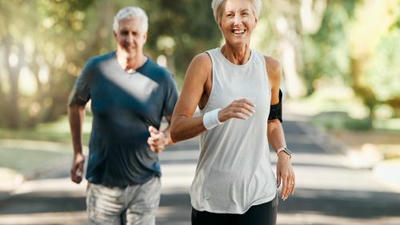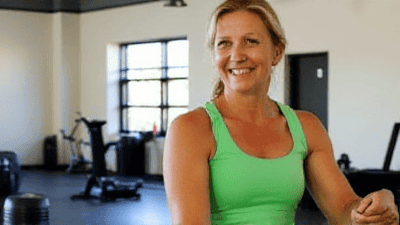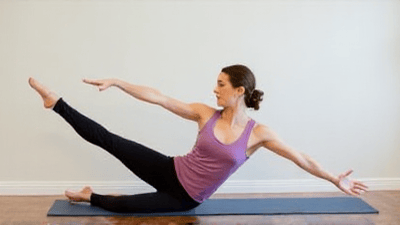
Aging is a natural process that can bring about changes in our bodies and lifestyles. However, reaching the age of 50 does not mean that one has to slow down or accept a decline in physical fitness. In fact, this stage of life can be an excellent opportunity to prioritize health and well-being. Active aging is about integrating movement and exercise into daily routines to maintain strength, flexibility, and mental agility.
Understanding the Importance of Active Aging
As we age, the importance of maintaining physical fitness becomes even more pronounced. Regular exercise and an active lifestyle can lead to numerous benefits, including:
-
Improved Strength and Balance: Strength training helps counteract muscle loss associated with aging, improving overall body strength and stability.
-
Enhanced Flexibility: Regular stretching and physical activity increase flexibility and range of motion, reducing the risk of injuries.
-
Better Mental Health: Exercise releases endorphins, which can help improve mood and reduce feelings of anxiety and depression.
-
Weight Management: Staying active helps regulate body weight, preventing the unwanted gains that can accompany aging.
-
Enhanced Cardiovascular Health: Regular aerobic exercise strengthens the heart and lungs, reducing the risk of cardiovascular diseases.
-
Social Engagement: Participating in group fitness classes or activities fosters social connections and can improve overall quality of life.
Key Components of an Active Aging Fitness Program
To create an effective fitness program after 50, it is essential to incorporate various types of exercise. A well-rounded fitness routine should include the following components:
1. Strength Training
Strength training is crucial for maintaining muscle mass and bone density as we age. Here are some tips for incorporating strength training into your routine:
-
Frequency: Aim to perform strength training exercises at least two days a week. Focus on major muscle groups such as the legs, back, chest, and arms.
-
Bodyweight Exercises: Start with simple bodyweight exercises like push-ups, squats, lunges, and planks. These can be done at home with little to no equipment.
-
Resistance Bands: Resistance bands are a great way to add resistance without heavy weights. They are versatile and can be used for a variety of exercises.
-
Weight Lifting: If comfortable, incorporate free weights or weight machines at the gym. Start with light weights and gradually increase as strength improves.
-
Form and Technique: Prioritize proper form and technique to prevent injuries. Consider working with a personal trainer, especially when starting a new program.
2. Cardiovascular Exercise
Cardiovascular exercise is essential for maintaining heart health and improving endurance. Here are some ways to incorporate aerobic activity:
-
Walking: Walking is one of the easiest and most accessible forms of cardiovascular exercise. Aim for at least 150 minutes of moderate-intensity walking each week.
-
Swimming: Swimming is a low-impact activity that works the entire body and is especially beneficial for individuals with joint issues.
-
Cycling: Riding a bike, whether outdoors or on a stationary bike indoors, is a great way to improve cardiovascular fitness while being easy on the joints.
-
Group Classes: Join group fitness classes such as dance, Zumba, or aerobics to stay active in a fun and social environment.
-
Interval Training: Incorporating intervals of higher intensity into your cardio sessions can improve cardiovascular fitness in a shorter amount of time.
3. Flexibility and Balance Exercises
Flexibility and balance exercises are vital for reducing the risk of falls and injuries. Consider the following activities:
-
Stretching: Include dynamic stretching before workouts and static stretching afterward to maintain flexibility. Focus on major muscle groups and hold each stretch for 15 to 30 seconds.
-
Yoga: Yoga improves flexibility, balance, and overall well-being. Look for classes specifically designed for older adults or beginners.
-
Tai Chi: Tai Chi is a gentle form of martial arts that focuses on slow, controlled movements. It improves balance, flexibility, and reduces stress.
-
Balance Exercises: Incorporate exercises that focus on balance, such as standing on one leg, heel-to-toe walks, and using balance boards.
4. Core Strengthening
Core strength is essential for stability and preventing falls. A strong core supports the back and improves posture. Incorporate the following exercises:
-
Planks: The plank is an effective core exercise that targets multiple muscle groups. Aim to hold the position for 20 to 30 seconds and gradually increase the duration.
-
Seated Leg Lifts: While sitting in a chair, lift one leg at a time while engaging your core. Perform several repetitions on each side.
-
Bridges: Lying on your back with knees bent, lift your hips off the ground while squeezing your glutes. This exercise strengthens the lower back and core.
-
Pilates: Pilates focuses on core strength and stability. Consider attending a class or following online videos tailored for older adults.
Developing a Routine
Creating a consistent exercise routine is essential for long-term success. Here are some tips to help establish and maintain a fitness regimen:
1. Set Realistic Goals
Start by setting achievable fitness goals. Consider what you hope to accomplish, whether it is improving strength, losing weight, or enhancing overall fitness. Use the SMART criteria:
-
Specific: Clearly define what you want to achieve.
-
Measurable: Choose criteria to measure progress.
-
Achievable: Make sure your goal is attainable based on your current fitness level.
-
Relevant: Align your goals with your overall health priorities.
-
Time-Bound: Set a timeframe for achieving your goals.
2. Create a Weekly Schedule
Plan your workouts just as you would any other important appointment. Create a weekly schedule that includes a mix of strength training, cardio, flexibility, and balance exercises. Be sure to allow for rest days to promote recovery.
3. Stay Flexible
While consistency is crucial, it is also important to stay flexible. Life can be unpredictable, and there may be days when you cannot follow your routine. Instead of feeling discouraged, find alternative ways to stay active. Short bursts of physical activity, even for 10 minutes, can be beneficial.
4. Track Your Progress
Keep track of your workouts, noting what exercises you performed, durations, and improvements. This can help you stay motivated and make adjustments as needed. Consider using fitness apps or journals to log your activity.
5. Find an Exercise Buddy
Working out with a partner can make exercise more enjoyable and provide motivation. Find a friend or family member who shares similar fitness goals and build a routine together. Having accountability can increase adherence to your fitness plan.
6. Listen to Your Body
As you engage in regular exercise, pay attention to how your body feels. It is normal to experience some soreness, but persistent pain or discomfort is a sign to reassess your routine. Consult with a healthcare professional if you have concerns about your exercise program.

Incorporating Nutrition for Optimal Wellness
In addition to regular exercise, proper nutrition is paramount for active aging. A balanced diet can support physical fitness and maintain overall health. Consider the following nutrition tips:
1. Prioritize Whole Foods
Focus on consuming whole, minimally processed foods rich in nutrients. Fill your plate with fruits, vegetables, whole grains, lean proteins, and healthy fats.
2. Maintain Portion Control
As metabolism naturally slows with age, maintaining portion control can help regulate body weight. Be mindful of serving sizes and avoid overeating.
3. Stay Hydrated
Proper hydration is essential for overall health. Aim to drink plenty of water throughout the day. Consider monitoring your hydration levels, especially if you engage in physical activity.
4. Incorporate Protein
Adequate protein intake is crucial for repairing and building muscle. Include lean sources of protein, such as poultry, fish, beans, lentils, eggs, and dairy products, at each meal.
5. Limit Added Sugars and Saturated Fats
Reduce intake of added sugars, processed foods, and saturated fats. Instead, choose healthy fats such as those found in avocados, nuts, and olive oil.
6. Consider Supplements
While a balanced diet is essential, some individuals may need supplements to meet their nutritional needs, particularly for vitamin D, calcium, and omega-3 fatty acids. Consult a healthcare professional before starting any new supplements.
Social Connections and Mental Health
In addition to physical fitness, maintaining strong social connections is crucial for overall well-being. Engaging in social activities and building community can help reduce feelings of isolation and improve mental health.
1. Join Community Programs
Look for local community centers, gyms, or senior centers that offer fitness classes, workshops, or social events tailored for older adults. These programs foster social engagement and provide opportunities for connection.
2. Participate in Group Fitness Classes
Participating in group fitness classes is a great way to meet new people while staying active. Classes such as yoga, water aerobics, or dance can offer a fun and social atmosphere.
3. Stay Connected with Friends and Family
Make an effort to stay in touch with loved ones. Regular check-ins, phone calls, or video chats can help foster deep connections and combat loneliness.
4. Volunteer in Your Community
Consider volunteering your time at local organizations or charities. Giving back can provide a sense of purpose and connect you with others who share similar interests.
Overcoming Barriers to Exercise
While staying active is essential, various barriers may arise that hinder motivation or ability to exercise. Understanding these barriers and developing strategies to overcome them can help sustain an active lifestyle.
1. Time Constraints
Many individuals may feel they do not have enough time to exercise. To overcome this barrier, prioritize your health and schedule workouts like any other appointment. Even short bursts of activity throughout the day can be beneficial.
2. Cost of Gym Memberships
While gym memberships can be helpful, they are not the only option for staying active. Explore free or low-cost alternatives such as exercising at home, walking or biking in your neighborhood, or utilizing community parks.
3. Lack of Motivation
Staying motivated can be challenging, especially when starting a new routine. Set realistic goals, track your progress, and find an exercise buddy to keep you accountable. Celebrate achievements to boost motivation.
4. Physical Limitations
If you have physical limitations or chronic conditions, consult with a healthcare provider or physical therapist to develop a safe exercise program tailored to your needs. There are plenty of low-impact exercises that can be adapted to individual circumstances.
Conclusion
Active aging is about embracing a lifestyle characterized by movement, fitness, and wellness. By focusing on regular physical activity, incorporating flexibility and balance exercises, and nurturing social connections, those over 50 can maintain strength, improve health, and enjoy life to the fullest.
Remember that it is never too late to start. Incorporate these fitness tips into your routine, and celebrate your body’s ability to remain strong and resilient. With a commitment to active living, you can thrive during this vibrant stage of life and enjoy all the opportunities that come with it.



